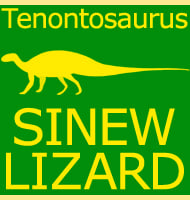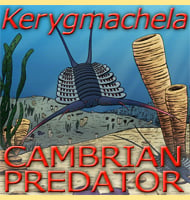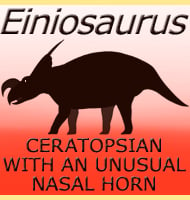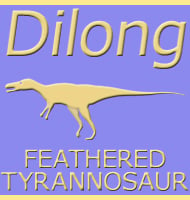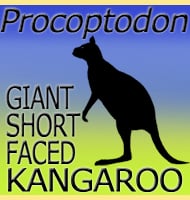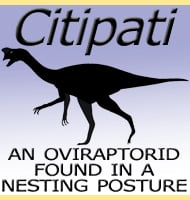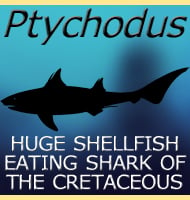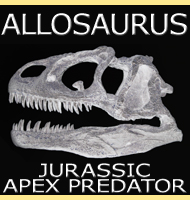In the past Africa has often been overlooked when people review dinosaurs, which is odd given that Africa is home to so many unique genera of dinosaurs that upon many occasions have led to many interesting discoveries and new ideas about the wider development of dinosaur palaeontologists in general.
A quick note before we begin, this list is composed of dinosaur genera known to have existed upon the mainland of continental Africa, and does not include Madagascar.
10. Eocursor
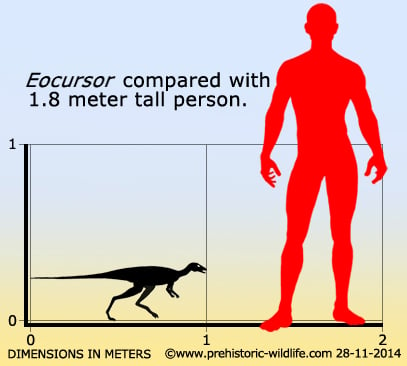
Eocursor was a very important discovery as the genus marked one of the first known earliest known appearances of an ornithischian dinosaur. Better known as ‘bird-hipped- dinosaurs, ornithischians make up one of the two main dinosaur groups (the other being the saurischian, lizard-hipped, dinosaurs).
Ornithischian dinosaurs are so called because one of the hip bones called the pubis bends back to point down and to the back instead of forwards.
This allowed for a much larger and bulkier stomach which allowed for plant matter to be broken down over time, as it takes longer to digest plants than meat. Eocursor however still had small pointed teeth which is a throwback from meat eating dinosaurs. Eocursor is of a kind of dinosaur that over millions of years would give rise to many diverse and popular dinosaur groups including the ornithopods, iguanodonts, hadrosaurs, ankylosaurs, stegosaurs, ceratopsians and pachycephalosaurs.
9. Heterodontosaurus
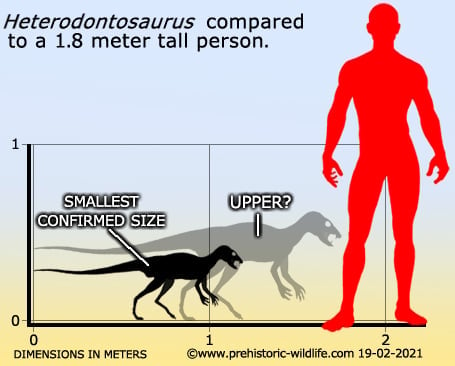
Heterodontosaurus was a small dinosaur, but one that has still managed to spark a great deal of debate and confusion amongst dinosaur enthusiasts.
The name Heterodontosaurus means ‘different-toothed lizard’ and this is a reference to how Heterodontosaurus had slicing teeth in the front of the mouth, grinding teeth in towards the back, as well as two large tusks that grew down.
It may be that the tusks were digging aids so that Heterodontosaurus could eat plant roots that otherwise would have been inaccessible.
Alternative theories however suggest that Heterodontosaurus was also an occasional predator, and used the different teeth to eat a variety of different small animals and plants. The tusks were also once thought to have been a sign of maturity, though since juveniles with tusks have also been found, discounting this idea. Heterodontosaurus also hand hands capable of grasping, features that would have been of great help in foraging.
8. Elaphrosaurus
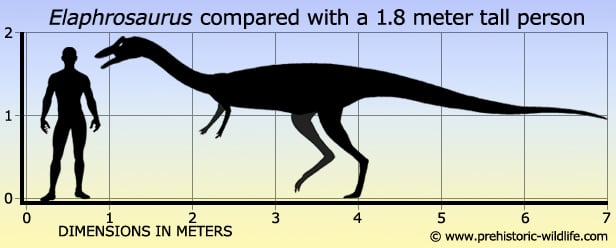
With the holotype individual coming from Tanzania, Elaphrosaurus was a light weight yet medium sized theropod dinosaur that in terms of speed and agility was bay far one of the more dangerous predators in Africa during the turn of the Late Jurassic. Early Cretaceous.
Aside from the light gracile build, Elaphrosaurus is noted for having a lower leg bones like tibias being monger than the femurs, thigh bones. These leg proportions are a clear sign that Elaphrosaurus would have been able to achieve speeds that were relatively fast for a dinosaur.
The gracile proportions of Elaphrosaurus have caused confusions for palaeontologists since although Elaphrosaurus is classed as a ceratosaur, the body proportions are more akin to other kinds of theropods.
7. Paralititan
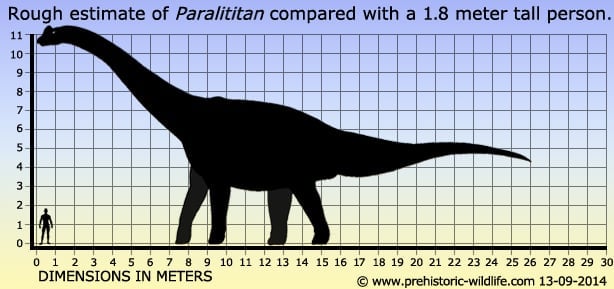
Every continent of the planet seems to have at least one genus of supersized dinosaur living on it, and in Africa that genus may be Paralititan. The main clue to the size of Paralititan is the humerus (upper ‘arm’ bone) which in the holotype that was discovered in Egypt measured one hundred and sixty-nine centimetres long. This makes the humerus of Paralititan the largest known for this kind of dinosaur.
Conservative estimates of Paralititan place the holotype individual as being approximately twenty-six meters long, meaning that Paralititan was perhaps not the largest titanosaur ever, but certainly one of if not the largest titanosaur on the African continent. For length, only genera such as Giraffatitan might have rivalled Paralititan, though in terms of sheer mass, Paralititan were still likely bigger.
6. Ouranosaurus
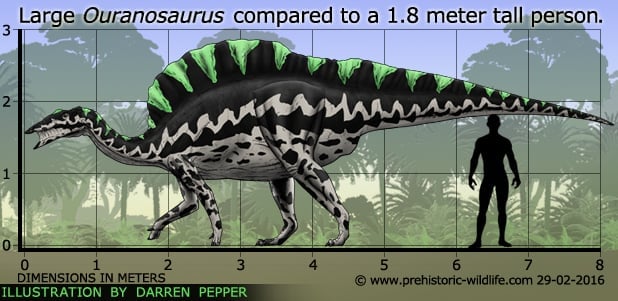
Ouranosaurus represents a type of large ornithopod dinosaur that is somewhere between an iguanodont, the common type of large ornithopod in the late Jurassic, and the later hadrosaurs that were common later in the Cretaceous.
However the real reason why Ouranosaurus makes the list is that the neural spines of the vertebrae were so elongated that they would have formed a sail/hump structure that grew up from the back.
Elongated spines are seen in many genera of later hadrosaurs but at the time of its description and writing of this list, Ouranosaurus is the only genus where the structure of the back is so specialised. Why this should be is still unknown for certain, but theories range from display, body temperature regulation to fat storage, or perhaps even a combination of all three.
5. Aardonyx
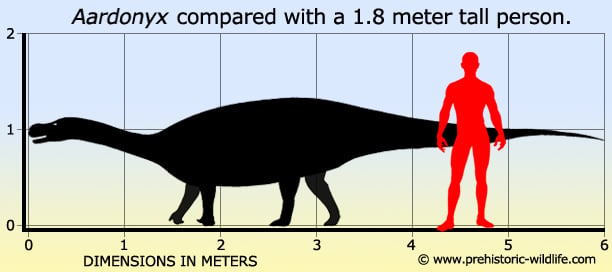
A sauropodomorph dinosaur from the Early Jurassic, Aardonyx is one of the key discoveries in our understanding of how the sauropod dinosaurs evolved from sauropodomorph dinosaurs. Clues here come from the legs of Aardonyx which show that this dinosaur had a greater disposition to walk upon fours like later sauropods rather than walk bipedally like earlier sauropodomorphs.
4. Nigersaurus
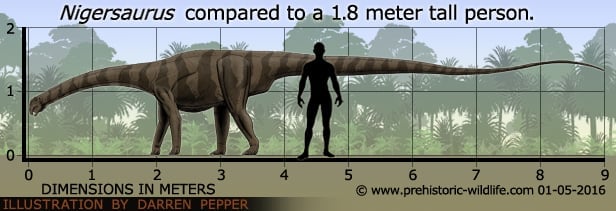
Many genera of sauropod dinosaur are known from Africa, but Nigersaurus is easily one of the most specialised. The specialisation here is the skull, with the front of the mouth being incredibly wide and holding row upon row of fine grinding teeth.
In addition to this, study of the inner ear of Nigersaurus shows us that the head would have almost always been pointing down with the mouth facing the ground. Such a mouth like this would have allowed Nigersaurus to crop the tops of huge swathes of low growing vegetation.
3. Kentrosaurus
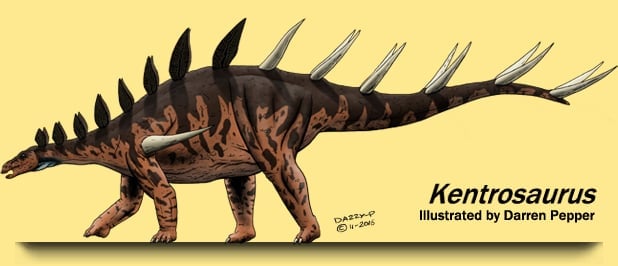
Kentrosaurus is an African cousin of the world famous Stegosaurus, and while today we now know of many stegosaurs, Kentrosaurus is by far one of the better known. Kentrosaurus was smaller than Stegosaurus and offers a glimpse into how the spikes and plates of stegosaurs served a display purpose.
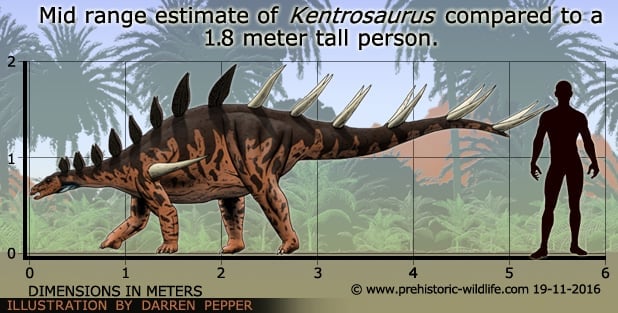
In Kentrosaurus the plates were only on the front half of the body, while spikes ran down the rear and tail. If the plates and spikes were only for defence, then the design and layout would have become standardised across all genera.
However the spikes on Kentrosaurus would have still made Kentrosaurus a difficult target for predatory dinosaurs, especially more so when you consider that two much larger spikes grew out from the shoulders. Kentrosaurus also seems to have gathered in large herds, with evidence from such behaviour coming from the discovery of at least seventy Kentrosaurus being found together.
2. Carcharodontosaurus
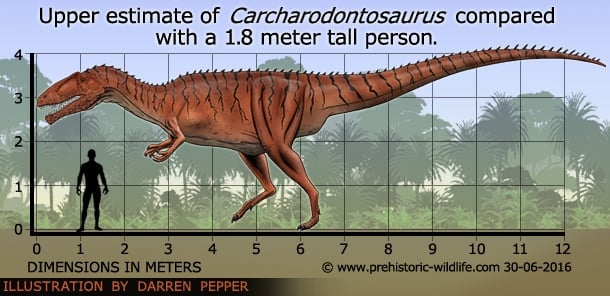
Even by the early twenty-first century, Carcharodontosaurus is still a surprisingly little known genus of theropod dinosaur. What is more surprising is that in terms of physical size, Carcharodontosaurus was one of the larger theropod dinosaurs, so much so that it is often dubbed the ‘African T-rex’.
This is a deliberate misnomer however as Carcharodontosaurus belongs to a different family of theropod dinosaurs called the Carcharodontosauridae, so named because Carcharodontosaurus was the first of this family to be named.
Carcharodontosaurus seems to have been ‘the’ predatory dinosaur of North Africa during the early/late Cretaceous boundary, with fossils so far being discovered in Algeria, Egypt, Morocco, Niger and Tunisia. The teeth of Carcharodontosaurus are also, large, blade-like and serrated, meaning that they could not be more perfect for slicing through the flesh of other dinosaurs.
It is actually these teeth which were the inspiration of the name Carcharodontosaurus which translates to English in the simplest terms as ‘shark-tooth lizard’. This is because the Carcharodon part is a reference to the Carcharodon shark genus which today includes Carcharodon carcarias, better known as the ‘great white shark’.
1. Spinosaurus
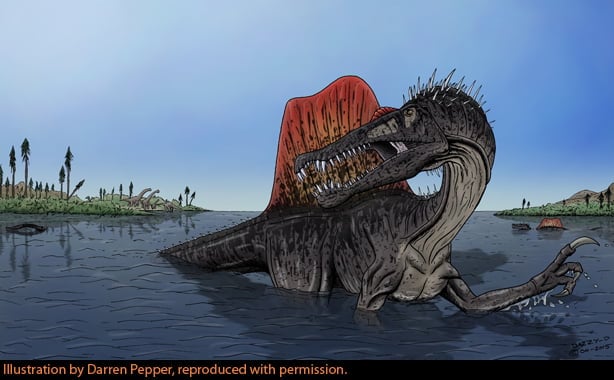
Without any doubt, no other African dinosaur has caught the public’s imagination as what Spinosaurus has.
Spinosaurus has been reconstructed in many different ways, from a classical but sail backed theropod, to one with a crocodile-like skull, to finally one that seems to have been quadrupedal, something quite unusual for a theropod dinosaur.
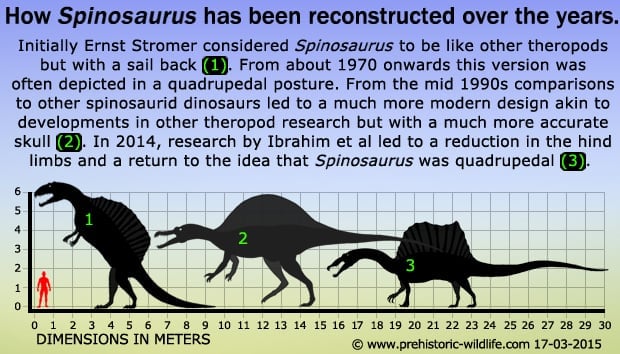
One thing that has now changed though is that in terms of physical length Spinosaurus was big, quite possibly longer even than a T. rex.
Modern analysis of Spinosaurus reconstructs this dinosaur as a fish hunter, standing on the sides and even swimming in the ancient rivers systems of North Africa.
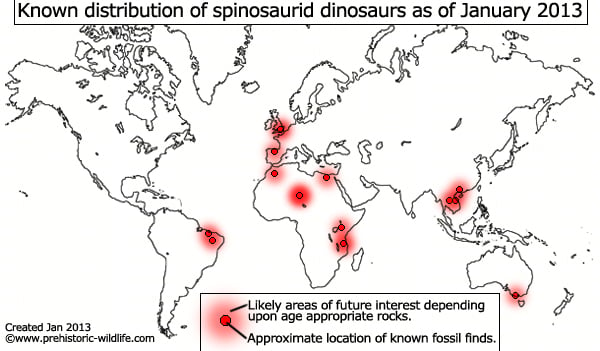
At the time of writing Spinosaurus fossils have been found in Egypt and Morocco, and given that these two countries lie on the farthest Eastern and Western ends of the continent, it is likely that back in the Cretaceous Spinosaurus would have ranged across all of North Africa wherever the habitat was suitable.
Honourable mentions
- Ostafrikasaurus - This genus may represent the earliest known appearance of a spinosaur in the fossil record. Unfortunately the only parts known at the time of writing are teeth, so it is difficult to infer anything else about this dinosaur.
- Massospondylus - A sauropodomorph dinosaur that is known from many individuals.

